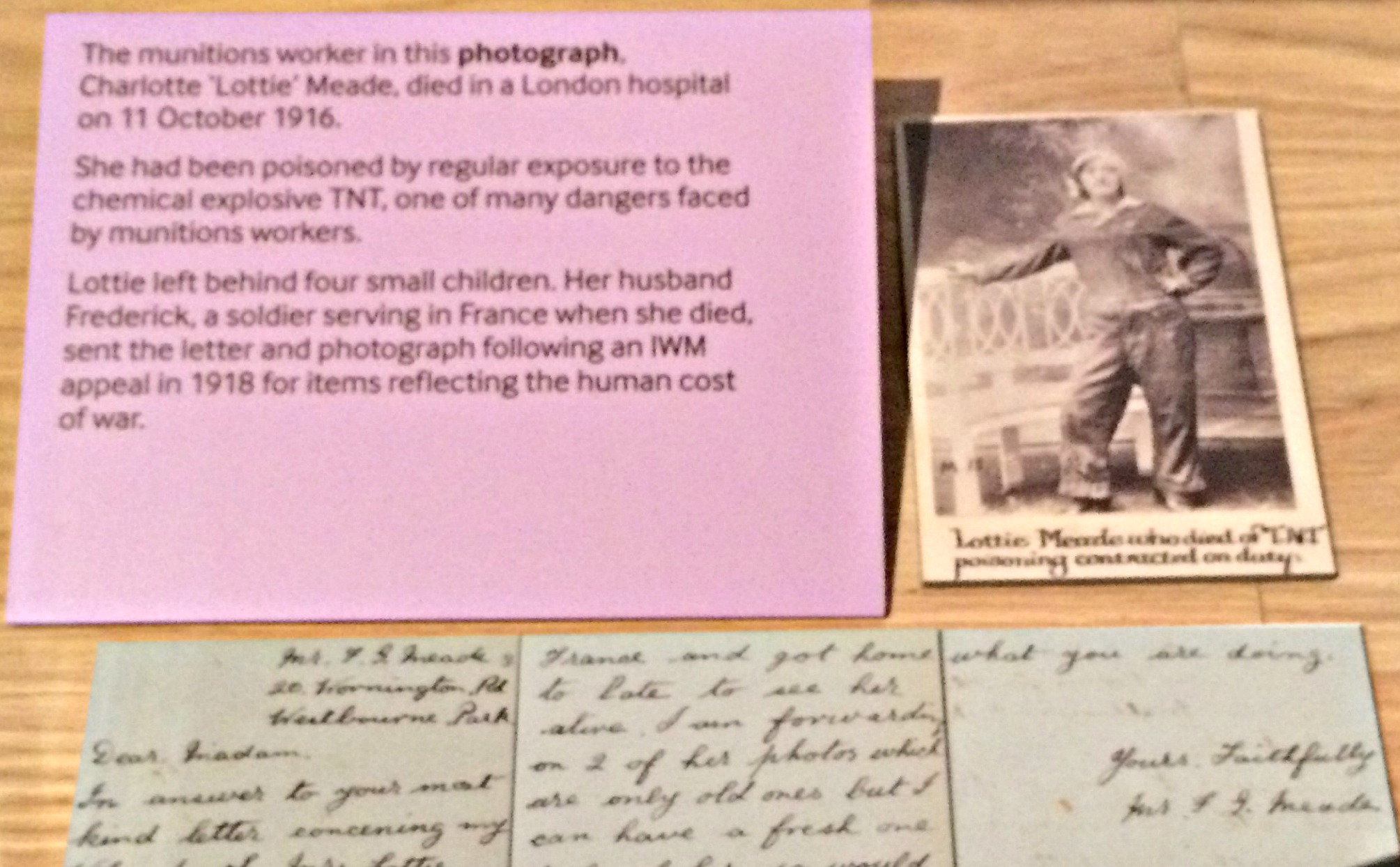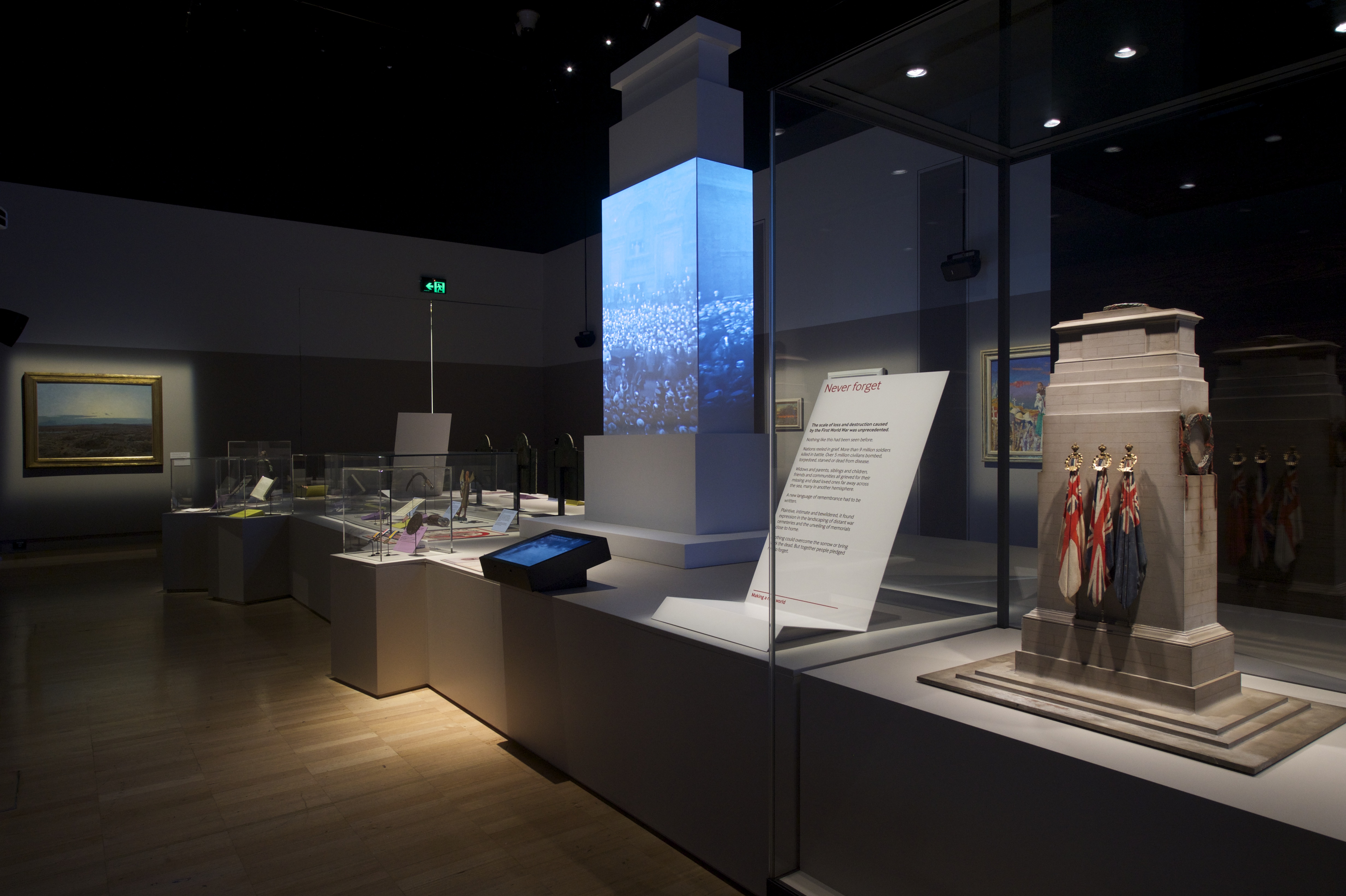The more time you spend at the WWI Centenary Exhibition at Melbourne Museum the more rewarding you will find it.

The exhibition showcases more than 350 precious World War I objects selected from Britain’s Imperial War Museums’ (IWM) world-renowned collection combined with digital technology.
While there are a number of `big ticket’ items such as guns, uniforms and paintings together with impressive animations, it’s the smaller personal exhibits that are the most moving – items such as letters and photos. Many of these items were donated to the museum on its opening in 1917. Established to collect and record the stories of those involved in the war, many Brits responded to the call for items.

Particularly moving is the story and photo of Charlotte `Lottie’ Meade. This mother of four young children was a munitions worker who died in London in 1916 as a result of regular exposure to chemical explosives. Her husband only had two pictures of her and he donated one to the IWM.

The pictures and letters from soldiers are equally as gut wrenching.
To complement these personal objects, the WW1 Centenary Exhibition organisers have developed a series of short, animated films which are shown on giant screens in the three central areas dealing with the war on land, in the air and at sea. They are cemented together by four further screens that overlook the central, tall-sided area known as ‘The Trench’, constructed to evoke a sense of the feeling of being in the trenches.
While much of the exhibition covers Great Britain’s role in the war, Australian stories and items of significance are also included as are those from other countries involved.

There’s a display on Manfred von Richthofen – better known as the ‘Red Baron’ – including the latest research which suggests he was shot down by Australian artillery.
Other items of interest include the 13-pounder Royal Horse Artillery Gun that fired the British Army’s first shell of the war, near Binche, 10 miles from Mons in Belgium. For the British Expeditionary Force (BEF), it began the war on the Western Front.
The exhibition also includes an extensive display of art works of international reputation, including Anna Airy’s Shop for Machining 15-inch Shells, Paul Nash’s Ypres Salient at Night, William Orpen’s A Peace Conference at the Quai d’Orsay and C R W Nevinson’s post- war The Unending Cult of Human Sacrifice.
All in all the entire exhibition provides a very moving and educational experience.
The Set Up
The exhibition is structured in 10` story areas’, each one incorporating a selection of original objects, art works and specially commissioned multi-media works.

*The World of 1900 sets the scene for war, looking at people and their lives around the world before 1914.
*Why War in 1914 explores the specific political conditions in Europe that led the world to war.
*Shock of War shows how the nature of modern, industrialised warfare was brutally revealed as soon as the fighting began.
*Feeding the Front makes the clear and indivisible connection between the fighting fronts and the home fronts, looking both at the huge manufacturing effort that was undertaken, particularly by thousands of women, to feed the guns in the front line and the use of ruthless economic warfare to attack civilians living in Germany and Austria-Hungary.

*The Trench uses a number of small, intimate objects to explore how men responded to life in the unique conditions of the trenches that characterised World War I.
*Machine of War looks at the central years of battle on land between 1914 and the end of 1917 as men adapted to the nature of modern war, experienced different conditions in places as far apart as Mesopotamia and Belgium, Gallipoli and France and dealt with the casualties of the fighting.
*Beating the U-boat: charts the war at sea, looking specifically at the emerging threat to Allied shipping from German submarines and the steps taken to overcome this.

*Taking War to the Skies: focuses on the new technology of aviation, as war left the ground for the first time, spreading across the sky with increasing ferocity.
*War’s End begins by looking at the change in the war’s balance of power in 1917 as America entered by joining the Allied side and Russia exited following two tumultuous revolutions, before advancing to the final phase as relentless Allied attacks on the Western Front forced the Germans to sign an Armistice.
*Making a New World: ends the story with the drawing up of the final peace treaties in Paris in 1919 and the return of men and women around the world to peace.

To Visit
The exhibition is being held at the Melbourne Museum, 11 Nicholson Street, Carlton . Tickets can currently be booked up to July 12.
Jenny Burns attended the media preview of the exhibition on April 16 2015 as a guest of the organisers.
- Melbourne, Museum, reviews, World War 1
Subscribe My Newsletter
Unsubscribe at any time.




